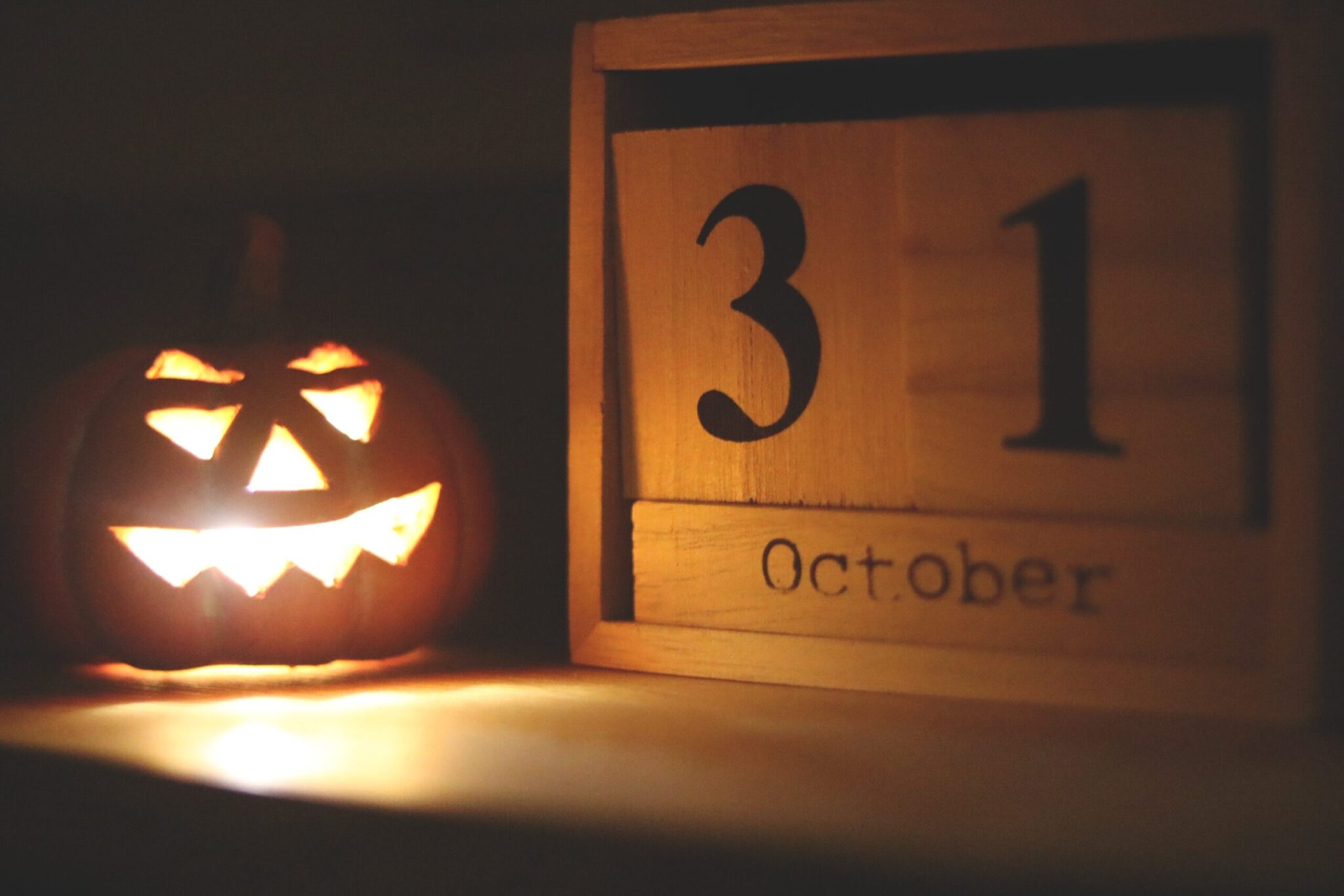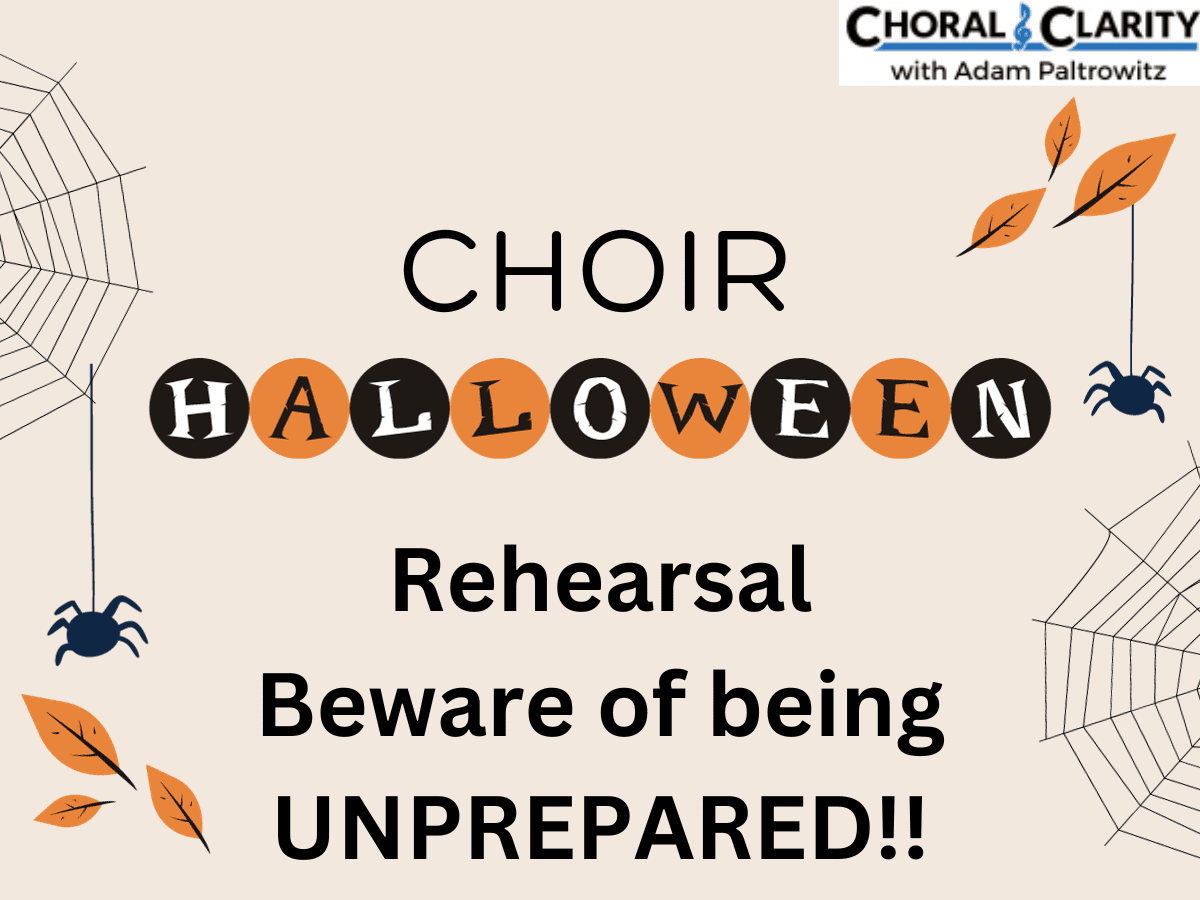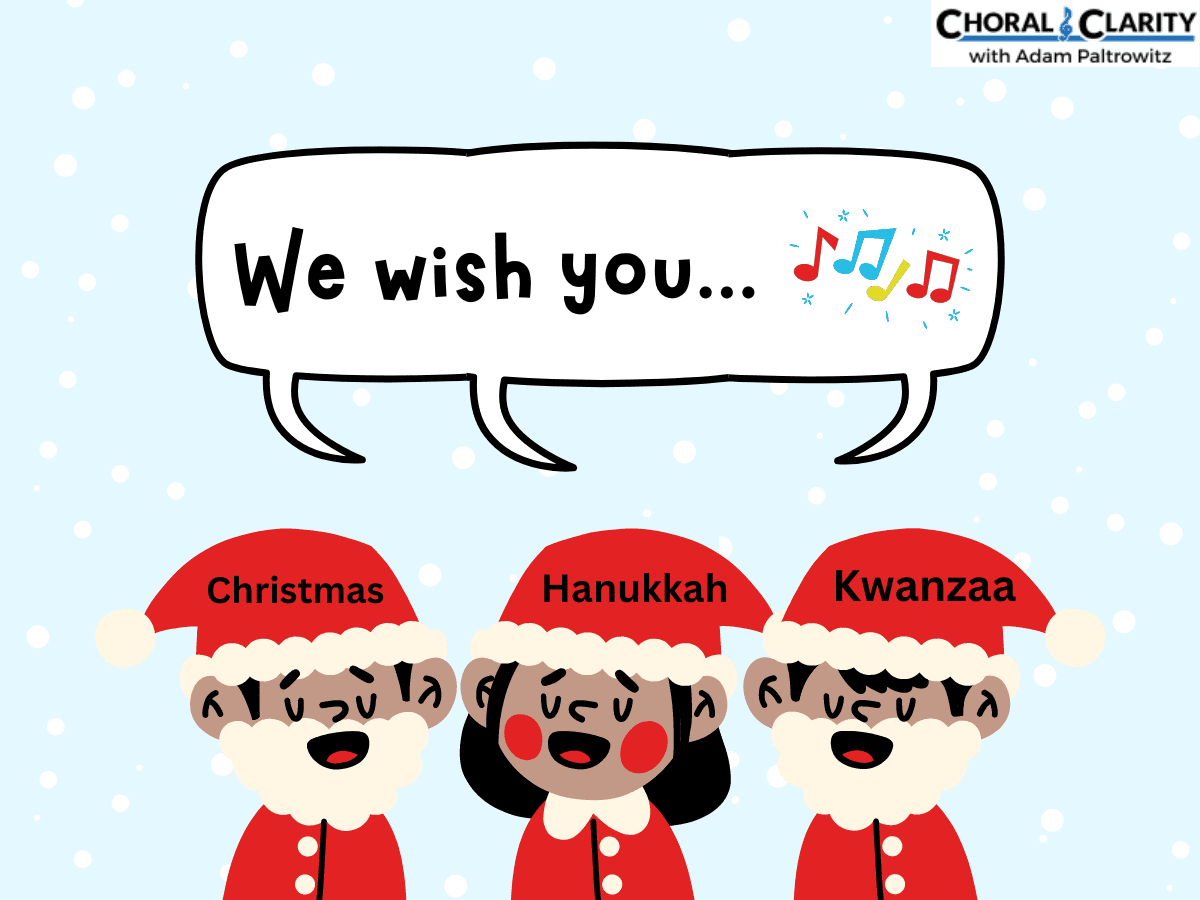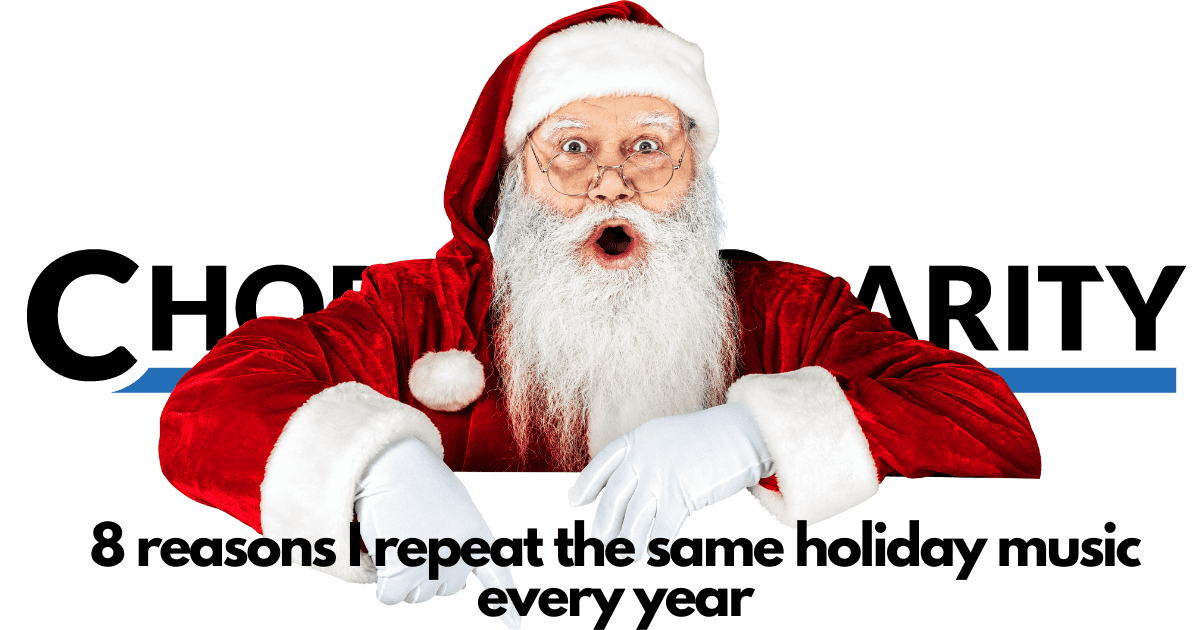My high school choir has 11 traditional winter choir concert songs that we repeat year after year. Two songs have been traditions of the choir dating back to 1966. The other 9 songs have become traditions based on the students’ desire to repeat each song. All 11 songs are easy to learn and are loved by my students and our audiences.
These traditions have become a reason why alumni come back year after year. They also create a sense of continuation from year to year for the rising students. I wrote a blog post that explains in more detail the benefits of repeating the same songs every year.
My annual winter choir concert, approximately 90 minutes long, usually consists of these 11 traditions and 12-15 selections of new repertoire. While this may appear tradition-heavy, most traditional songs are on the shorter side. It is true that 40-45% of the concert repertoire is traditional music but this only accounts for approximately 1/3 of the concert length. It also accounts for less than 20% of rehearsal time throughout the semester.
For every song, I have provided a video of my choir’s concert performance along with links of where you can find the sheet music. I also offer a brief explanation of how each piece became incorporated into the concert along with some teaching and programming notes. I’ve listed these songs in the order they occur throughout my concert.
I hope these 11 pieces can help in rounding out your concert or help you to create new traditions!
WATCH THIS CAREER-CHANGING ONLINE, ON DEMAND TRAINING SESSION!
Here are my choir’s 11 traditional winter choir concert songs:
1. Jubilate Deo – traditional round
This round is sung by my Treble Choir to open the concert. It ends with the ensemble surrounding the audience. I teach this round by rote during the first week of school. We generally sing on the vowels first before adding the sound interrupters (consonants) one at a time.
Flat.io – save 15% on the most intuitive music notation program on the market!
2. The Gift to be Simple by Bob Chilcott (SSAA)
I first heard a local college choir perform the SATB arrangement around twenty-five years ago. The following year, my high chamber group performed the same SATB arrangement. A few years later, I eliminated the chamber choir and created a treble choir. I immediately introduced this SSAA arrangement to the brand new ensemble and it has been a tradition for more than 15 years. This song is sung in the middle of the concert and is only performed by current members.
3. Oh Hanukkah (SSA) – arr. Adam Paltrowitz
I originally wrote this arrangement for a middle school mixed choir but adapted it for my Treble Choir almost twenty years ago. This arrangement brings the Hanukkah festivities to life on the stage and excites the audience. I teach this piece by rote in 15-20 minutes. Click here for the SAB arrangement that works equally well!
Alternative Concert Assignment – when your singers can’t attend the concert
4. Night of Silence (many voicings available) – Daniel Kantor (Christmas – Instantly Downloadable)
This is a special tradition because all of the sopranos and altos from both choirs are on the stage along with our treble alumni. On verse four, the mixed choir basses and tenors quietly stand up from the back of the auditorium and sing Silent Night as a counter melody to Night of Silence. The audience always looks forward to hearing the lower voices, and the parents of new choir members turn their heads with true surprise and awe. In the end this is just a simple melody that can be learned in 10 minutes. As a result, this is a really easy and effective piece to re-learn and repeat each year!
Try SIGHT READING FACTORY and save 10% using code: choralclarity
5. The Storm Is Passing Over– arr. Barbara Baker
This piece is sung by all the sopranos and altos of both choirs, along with treble alumni. It has been a tradition since the inception of the Treble Choir in 2003. It closes the first half of the concert. I teach this song on the first week of school by rote. We frequently have students improvise solos and student conductors as well.
Post Concert Self-Assessment/Alternative Concert Assignment Bundle
6. O Come Emmanuel (SATB) – traditional
The Mixed Choir opens the second half of the concert with their processional. This has been a tradition since 1966. It is sung fully in unison until the final chorus.
WATCH THIS CAREER-CHANGING ONLINE, ON DEMAND TRAINING SESSION!
7. Danny Boy – arr. Joseph Flummerfelt
This piece always has great connection to the choir and our audience members. We sing it throughout the year. This arrangement is a bit more challenging than everything else on the list, but it is still attainable in a short period of time.
8. Carol of the Bells – arr. Peter Wilhousky
This is perhaps the most recognizable Christmas piece of all time. It always impresses audiences and yet it is one of the simplest pieces to learn. I spend a total of 10-15 minutes per season working on it. The best part about this tradition is how we end it. Give it a listen;)
Post Concert Self-Assessment – how your students can accurately grade their performance
9. Dreidel (SATB) – arr. Adam Paltrowitz (Hanukkah – Instantly Downloadable)
Well, if you didn’t hear how we end Carol of the Bells (in the last clip), the secret is that we add this “Dreidel” arrangement right onto Carol of the Bells. The audience can’t wait to hear how we connect the two! There is also a version for SSA, SA choirs.
10. When Rooks Fly Homeward by Arthur Baynon
This has been a traditional of our choir since 1966. We circle the audience and invite our alumni to join us. This is always the second to last song of our winter concert. It brings a sense of stillness into the room and sets us up for our most exciting traditional closer. “When Rooks Fly Homeward” consists of two verses of just four lines. We repeat the second verse an additional time on “oo”.
WATCH THIS CAREER-CHANGING ONLINE, ON DEMAND TRAINING SESSION!
11. Siyahamba – traditional
This is the annual closing piece to our winter concert. We bring together both choirs and invite our alumni. For us it is a symbol of unity. We frequently have audience members singing along. Our choir sings Siyahamba at numerous community events throughout the year, but during the winter season, it is a nice closer that represents the message of Kwanzaa. I highly recommend teaching this piece by rote!
Try SIGHT READING FACTORY and save 10% using code: choralclarity










Leave A Comment